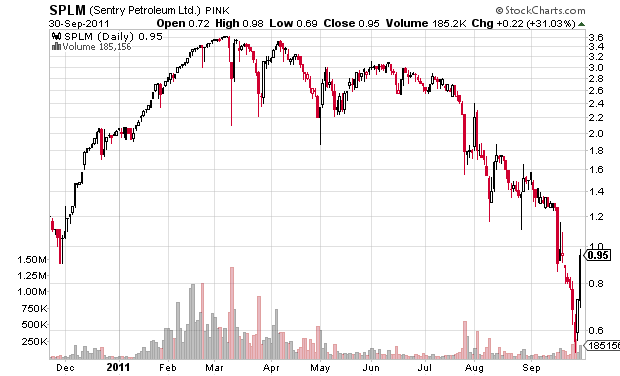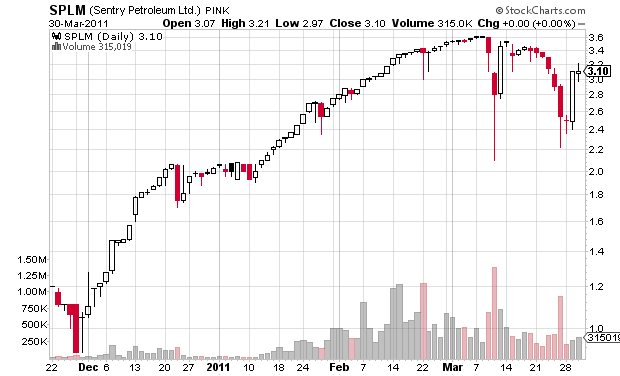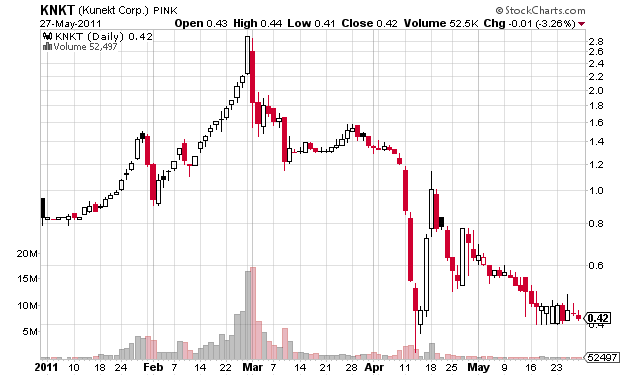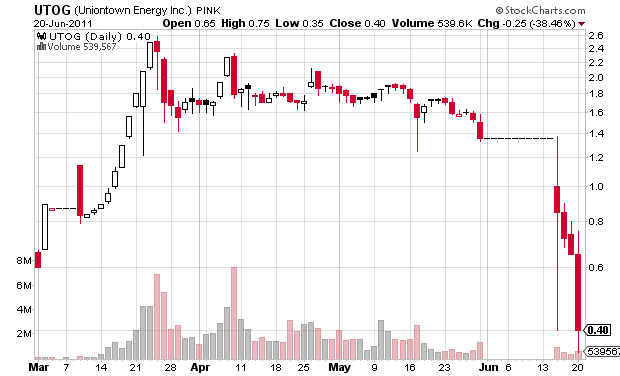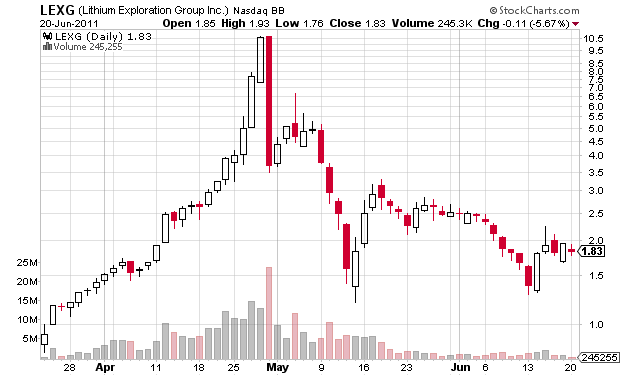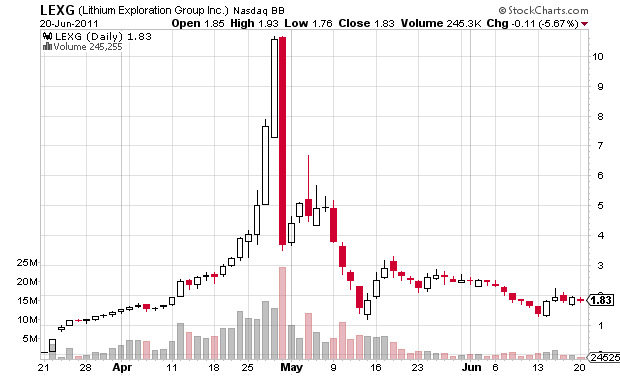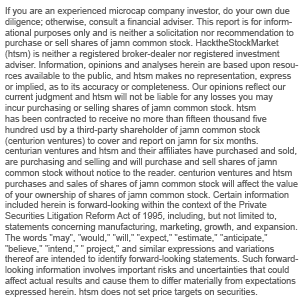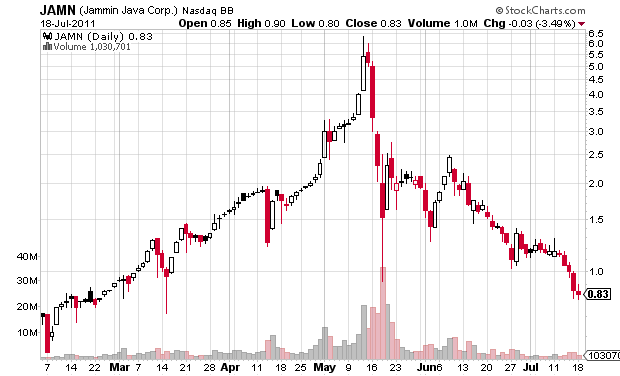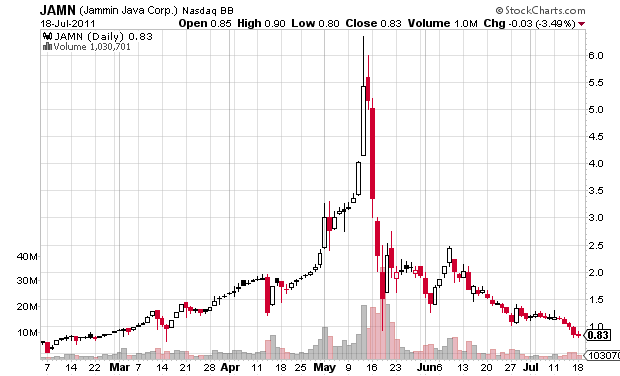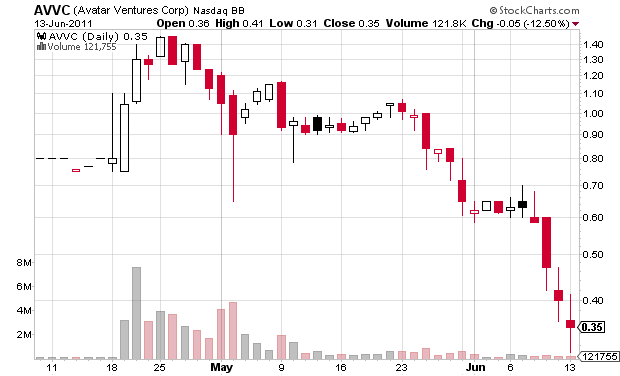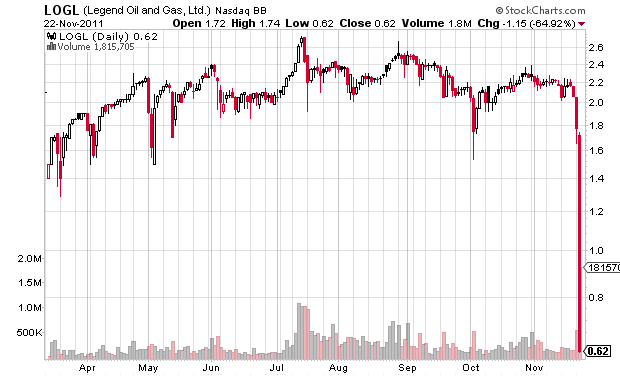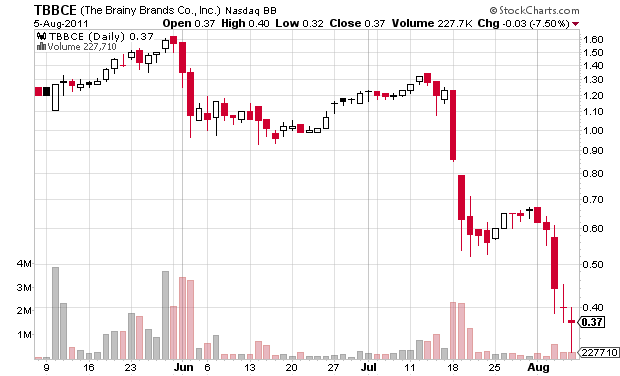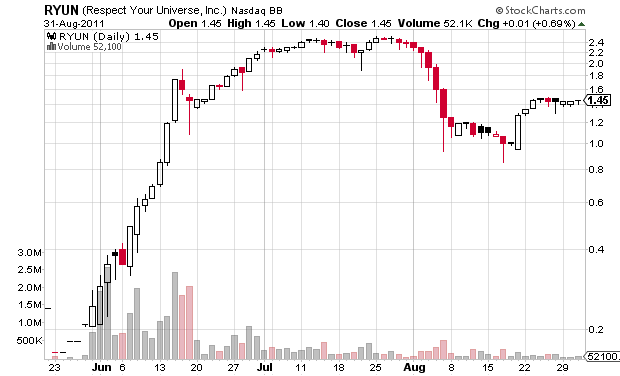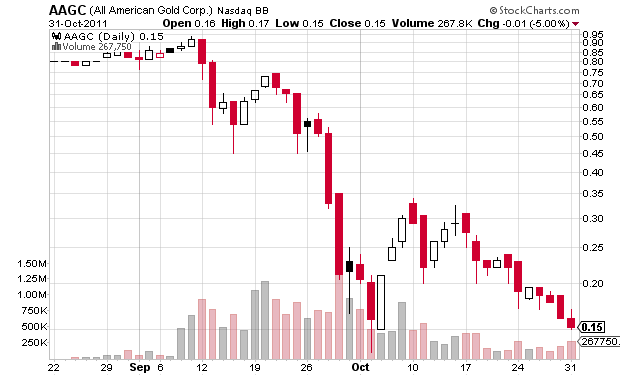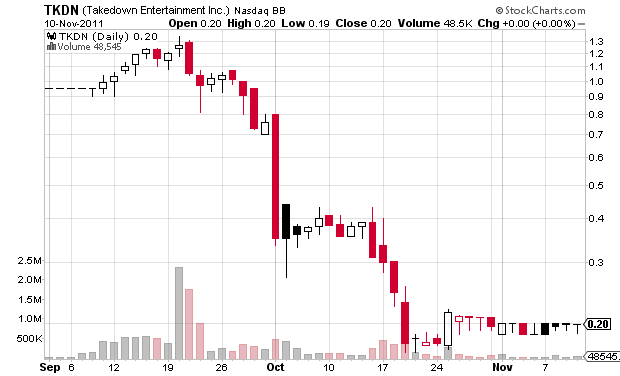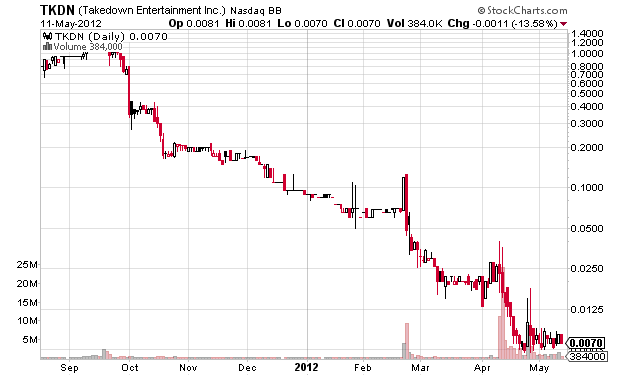I haven’t done any posts like this so far this year so I am going pretty far back. Please remind me in the comments of any big pumps I forget and I’ll add them. See my last pump and dump recap from January to see some mailer pumps from the very beginning of the year.
Mailer Pumps
SPLM – $400k snail mail pump. See an image of the disclaimer here. The last part of the disclaimer is the most interesting: “”In order to enhance public awareness of Sentry Petroleum Ltd., and other companies profiled by WER [World Energy Report] through the distribution of this report, ECA [Energy Capital Advisors] paid WER four hundred thousand dollars. These funds were applied towards costs associated with creating, printing, and distributing this report. ECA will pay no additional sums. WER, ECA, and those associated with them may own shares and effect transactions in securities of Sentry Petroleum Ltd and other companies mentioned in this publication the sale of which could adversely affect the share price. The owner of ECA owns approximately zero point two six (0.36) percent of the outstanding shares Sentry Petroleum Ltd [sic] and will not sell any of those shares within ninety days of the date of this mailing.” [emphasis mine]
KNKT – $800k pump from Capital Financial Media (CFM). See post here (unfortunately the pump website is offline).
UTOG – $2.5m mailer pump. Trading was suspended by the SEC for two weeks at the beginning of June (a rare case where the SEC suspended trading in an active pump & dump). See website www.AmericanEnergyReport.com Disclaimer: “AmericanEnergyReport.com has been retained by an unrelated third party to perform promotional and advertising services intended to increase investor awareness of UnionTown Energy Inc. (UTOG). To date, AmericanEnergyReport.com has received two million five hundred thousand US dollars from an unrelated third party for performing these services. The services performed have included profiling the company on the AmericanEnergyReport.com website and issuing opinions concerning UTOG in newsletters and press releases. AmericanEnergyReport.com has received this amount as a production budget for advertising efforts and will retain amounts over and above the cost of production, copywriting services, mailing and other distribution expenses as a fee for our services. In addition AmericanEnergyReport.com expects to receive an additional two million dollars cash in future compensation for the continuation of the marketing program for an additional 3 months and to cover marketing vendors to pay for the costs of creating and distributing this report online in an effort to build market awareness, and AmericanEnergyReport.com will disclose any future compensation.”
LEXG – The greatest pump I have ever seen and probably one of the best ever. Note not just the price movement but the incredible volume — the value of stock traded on its last big up day exceeded $100m. This had a $3.29m budget disclaimed on these two websites: http://www.smauthority.com/video and http://www.thestockdetective.com/lexg/
Disclaimer: “Lithium Exploration Group, (LEXG), the company featured in this issue, appears as paid advertising, paid by Gekko Industries to provide public awareness for LEXG. … CM [Circuit Media] has received and managed a total production budget of $3,296,800 for this advertising effort and will retain any amounts over and above the cost of production, copywriting services, mailing and other distribution expenses, as a fee for its services. TSD [TheStockDetective] is paid $50,000 as an editorial fee from CM and also expects to receive new subscribers as a result of this advertising effort.”
Please note that unlike most of the stock charts on this page, the chart below is not log scale, to make seeing the price action during the pumps easier to see.
JAMN – An incredibly successful pump, the second most successful pump I have ever seen, after LEXG. This was pumped by HackTheStockMarket.com; see the pump page here (or here or here). The name and address information required by the CAN-SPAM law from this pumper changed multiple times, which leads me to believe it was all fake. HackTheStockMarket disclosed only $15,500 in payment for the promotion. The disclaimer was an image that is shown below.
Please note that unlike most of the stock charts on this page, the chart below is not log scale, to make seeing the price action during the pumps easier to see.
AVVC – $1.8m budget disclosed on this mailer pump. Lots of speculators / traders / idiots lost big going long on this stock — it was the first big pump failure following a string of very successful pumps early this year. Disclaimer: “CFM has received and managed a total production budget of $1,800,000 for this online advertising effort and will retain any amounts over and above the cost of production, copywriting services, mailing and other distribution expenses, as a fee for its services. Breakaway Stocks is paid $5,000 as an editorial fee from CFM and also expects to receive new subscriber revenue as a result of this advertising effort.” from this website.
LOGL – $1.275m mailer pump — see the SI pump mailer message board.
TBBC – This was a large pump from multiple sources with over $800,000 in compensation. Following are those that I can find:
“Charles Payne’s Common Sense Newsletter received forty thousand dollars, as an editorial fee, from Creative Direct Marketing Group, Inc., which it received from the featured Company. This company was chosen to be profiled after Charles Payne’s Common Sense Newsletter completed due diligence on the company. Charles Payne’s Common Sense Newsletter expects to generate revenue and new newsletter subscribers and valuable exposure, the amount of which is unknown at this time, resulting from the distribution of this report. Creative Direct Marketing Group, Inc. received fifteen thousand, eight hundred dollars from the Company, for the costs of creating and distributing this report in an effort to build investor awareness.” from this pump website
“StockMarketLife.com has been retained by an unrelated third party whose principal is a shareholder of the featured company, The Brainy Brands Company Inc. (TBBC), to perform promotional and advertising services intended to increase investor awareness of TBBC. StockMarketLife.com expects to receive up to six hundred thousand US dollars from the unrelated third party for performing these services. The services performed have included profiling the company on the StockMarketLife.com website and issuing opinions, including Charles Paynes report, concerning TBBC on this website, online marketing, in newsletters and press releases. StockMarketLife.com has received this amount as a production budget for advertising efforts and will retain amounts over and above the cost of the production, copywriting services, mailing, media buying and other online distribution expenses as a fee for our services.” This disclaimer was also in emails from GreenGainers.com and PowerPennyStocks.com, which all appear to be run by the same person/company.
“PennyStockRewards.com is a wholly owned subsidiary of Asset Development Strategies Corp. Currently Asset Development Strategies Corp. has been compensated $50000.00 for this advertising program from a non-affiliated third party shareholder who will be selling stock in TBBC.”
WallStreetPennyStockAdvisors.com received $200,000
RYUN – I am not sure of the details of this pump.
AAGC – $1.26m budget disclosed. Absolute destruction. Michael Williams Market Movers was paid $20,000 by Citiglory Consultants Ltd and Citiglory paid $1,265,178 for the cost of the promotion — due to website troubles I lost my copy of the disclaimer (the bastards had it as an image that I had saved). See the online version of the mailer (no longer working).
TKDN – $1.4m budget disclosed. Absolute destruction. Disclaimer: “CFM has received and managed a total production budget of $1,400,000 for this online advertising effort and will retain any amounts over and above the cost of production, copywriting services, mailing and other distribution expenses, as a fee for its services. M3 Profit Accelerator is paid $3,000 as an editorial fee from CFM and also expects to receive new subscriber revenue as a result of this advertising effort.” (CFM = Capital Financial Media). See the online version of the mailer at SmallCapFortunes
TKDN is an even more impressive dump when considered over nine months (hardly the long-term!) it dropped from a high of about $1.34 to a low of $0.006 — a drop of 99.55%.
Note: on 12/19/2011 the pumps in this post run by the big three email pumpers were removed to a GoodeTrades Premium post and more info on those pumps was added.
Disclaimer: No positions. This blog has a terms of use that is incorporated by reference into this post; you can find all my disclaimers and disclosures there as well.
